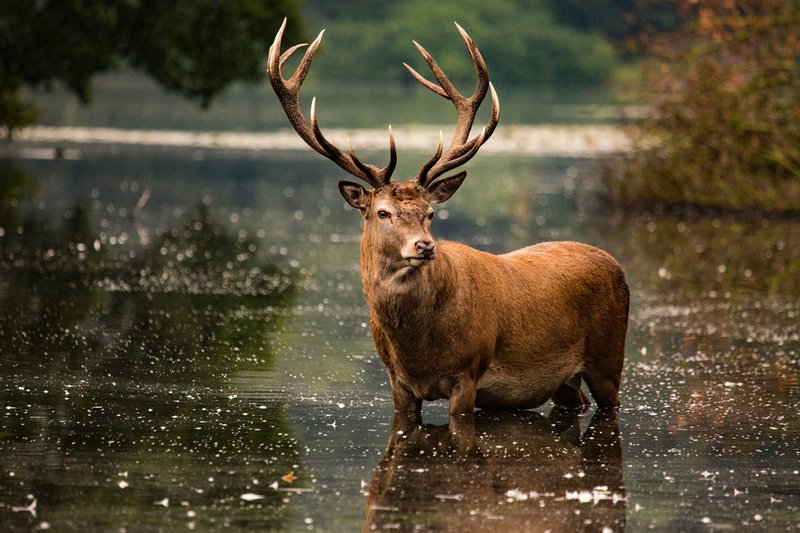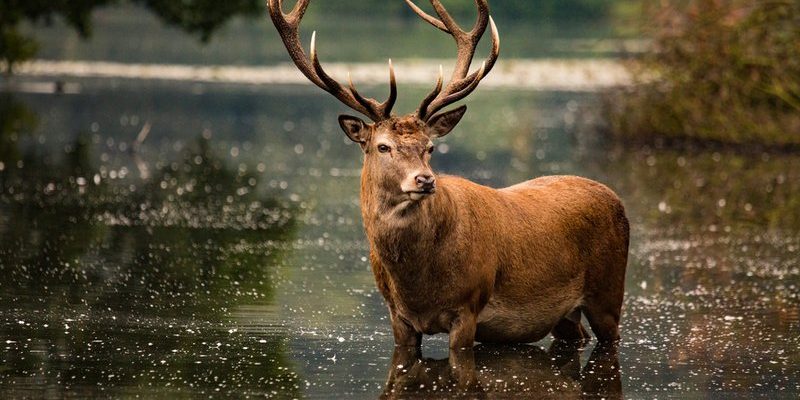
Let’s grab a cup of coffee and dive deeper into this captivating topic. Just like every creature on our planet, stags have their roots, tracing back through time. They belong to the Cervidae family, which is a big, happy family of deer species. Throughout history, stags have faced challenges and changes, all while leaving their mark on ecosystems around the world. By exploring their journey, we can better understand not just stags, but the broader picture of evolution itself.
Understanding the Cervidae Family
When we talk about stags, we’re diving into the Cervidae family, which includes species like elk, moose, and various types of deer. Each member of this family shares certain characteristics, such as the presence of antlers on males and a herbivorous diet. Antlers are not just for show; they play a significant role in mating displays and territorial battles. Think of them as nature’s way of promoting the fittest for survival.
The Cervidae family originated about 20 million years ago during the late Miocene epoch. Their early ancestors, known as dorações, were pretty different from the stags we see today. These creatures adapted to various climates and landscapes, showcasing an impressive variety of sizes and shapes. Over time, different species began to emerge, each uniquely suited to their environments, like the robust moose in colder regions versus the nimble red deer in temperate areas.
As the environment continued to change, so did the members of the Cervidae family. Fossil records reveal that several species thrived and then became extinct, often due to significant climatic shifts. It’s a cycle of life that demonstrates nature’s resilience and adaptability—traits that stags have inherited and continue to exemplify today.
The Rise of Modern Stags
Stags, particularly the red deer (*Cervus elaphus*), are among the most recognized members of the deer family today. They emerged about 2 million years ago, during the Pleistocene epoch, a period marked by ice ages and shifts in habitats. During this time, stags developed traits that allowed them to thrive in both the cold and temperate zones, showcasing their flexibility as a species.
One of the key characteristics that define modern stags is their impressive antlers, which can grow up to several feet wide. These antlers are not just for ornamentation; they serve crucial roles during mating contests when males vie for the attention of females. Imagine a showdown between two stags, their antlers clashing in a dramatic display of strength and vitality. This behavior has deep evolutionary roots, as it helps to ensure that only the strongest genes are passed on to the next generation.
The diet of modern stags also plays a significant role in their evolution. Primarily herbivorous, they feed on grasses, leaves, and shrubs. This diet not only nourishes them but also impacts the ecosystems they inhabit. By grazing, stags help control plant growth, which in turn supports a diverse range of wildlife. It’s a beautiful reminder of how interconnected life truly is.
Adaptations to Different Environments
Stags have adapted remarkably to various environments, from snowy mountains to dense forests. These adaptations are not just physical; they also involve behavioral changes that help them navigate their surroundings. For instance, stags living in colder climates often grow thicker coats to insulate against the frigid temperatures. In contrast, those in warmer regions can develop lighter coats, enabling them to regulate their body temperature more effectively.
Another fascinating adaptation is their social behavior. Stags often form herds, which provides safety in numbers. This communal living can help protect them from predators, such as wolves or big cats. Within these herds, stags can establish hierarchies, which determine access to mates and resources. It’s like a social network, where each member has a role that benefits the group as a whole.
Moreover, stags have also developed various vocalizations and body language to communicate with each other. From deep bellows to subtle movements, these signals help convey messages that are crucial for their survival. Just think about how much we rely on communication in our daily lives; stags have their own unique ways of doing the same.
The Importance of Antlers
Antlers are one of the most striking features of stags, and they hold significant evolutionary importance. Unlike horns, which are permanent and found in some other animals, antlers are shed and regrown each year. This process allows stags to display their health and vitality. A stag with large, healthy antlers signals to potential mates that it’s fit and ready to breed.
The growth of antlers is influenced by several factors, including age, nutrition, and genetics. During the spring and summer, when food is abundant, stags ramp up antler production. They use a special skin called velvet to nourish the growing bone. Once fully developed, the velvet is shed, revealing the impressive antlers underneath. This cycle is a perfect illustration of nature’s way of showcasing physical prowess.
However, it’s not all about size. The shapes and branching patterns of antlers can vary greatly between species and even individual stags. Some stags may develop unique shapes that could be advantageous in battles for dominance. It’s like nature’s version of a fashion statement, where the best-dressed stags get the most attention!
Impact of Humans on Stag Populations
Humans have had a profound impact on stag populations throughout history. As we expanded our territories, we hunted and altered landscapes, affecting deer habitats. Some species faced severe declines, while others adapted to coexist with humans, often living near urban areas.
In certain regions, hunting has been regulated to ensure that stag populations thrive. Conservation efforts aim to protect habitats and manage populations sustainably. Programs that encourage responsible hunting and habitat restoration are vital for the future of stags. It’s a classic case of balancing human needs with wildlife conservation—something we’re still learning to navigate today.
Interestingly, stags have become symbols of nature in many cultures, representing strength, freedom, and renewal. They appear in art, folklore, and even brands, reminding us of the beauty in wildness. By understanding the evolutionary journey of stags, we can appreciate these animals not just as beautiful creatures but as vital components of our ecosystems.
The Future of Stags
As we look to the future, the survival of stags hinges on our actions. The ongoing effects of climate change, habitat loss, and poaching pose significant threats to their populations. However, conservation efforts and awareness campaigns are making strides in protecting these majestic animals.
You might be wondering what you can do to help. Supporting wildlife conservation organizations, educating others about the importance of biodiversity, and advocating for sustainable practices are great ways to contribute. Every small action can lead to significant change, benefiting not only stags but entire ecosystems.
In conclusion, the evolutionary history of stags is a remarkable tale of adaptability and resilience. From their ancient ancestors to the modern stags we see today, they’ve navigated incredible challenges, all while showcasing the beauty and complexity of nature. As we continue to learn from their story, it reminds us of the responsibility we have to protect these creatures for future generations. So next time you see a stag in the wild or in a picture, take a moment to appreciate not just its beauty, but the rich history that has shaped it into the creature it is today.

